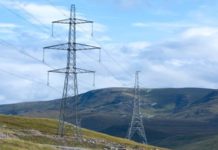
National Grid added 500MW of new sources of non-traditional flexibility in 2016, according to Cathy McClay, head of commercial, Electricity, at the system operator.
Much of that increase came from demand turn up (DTU) and enhanced frequency response (EFR), the schemes national grid launched to balance the system in summer and to create a route to market for faster sources of flexibility, such as batteries.
McClay said she had restructured her team to deal with an influx of interest from balancing services providers.
“Since 2014, there has been a 60% increase in active BMUs (balancing market units),” to more than 3,000 said McClay. Meanwhile, the SO “received enquiries from 250 new potential balancing services providers in last year and we anticipate a further 300 new ones this year,” she added. “So there is massive change going on.”
McClay was speaking at the second Power Responsive conference in London. National Grid UK system operator director Cordi O’Hara used the platform to urge delegates to engage in its consultation on overhauling the balancing markets. The resulting product strategy will be published in Autumn.
Related stories:
20 firms outline what it stopping them providing DSR
Demand response and battery storage: Give us your views
Free DSR and battery storage conference
Battery storage: Finance a challenge but businesses predict 3-7 year paybacks
National Grid plots major overhaul of balancing services market
As solar generation makes history, National Grid starts to feel the burn
Can National Grid hit its 2020 DSR target?
Free report: DSR and battery storage
Follow us at @EnergystMedia. For regular bulletins, sign up for the free newsletter.



